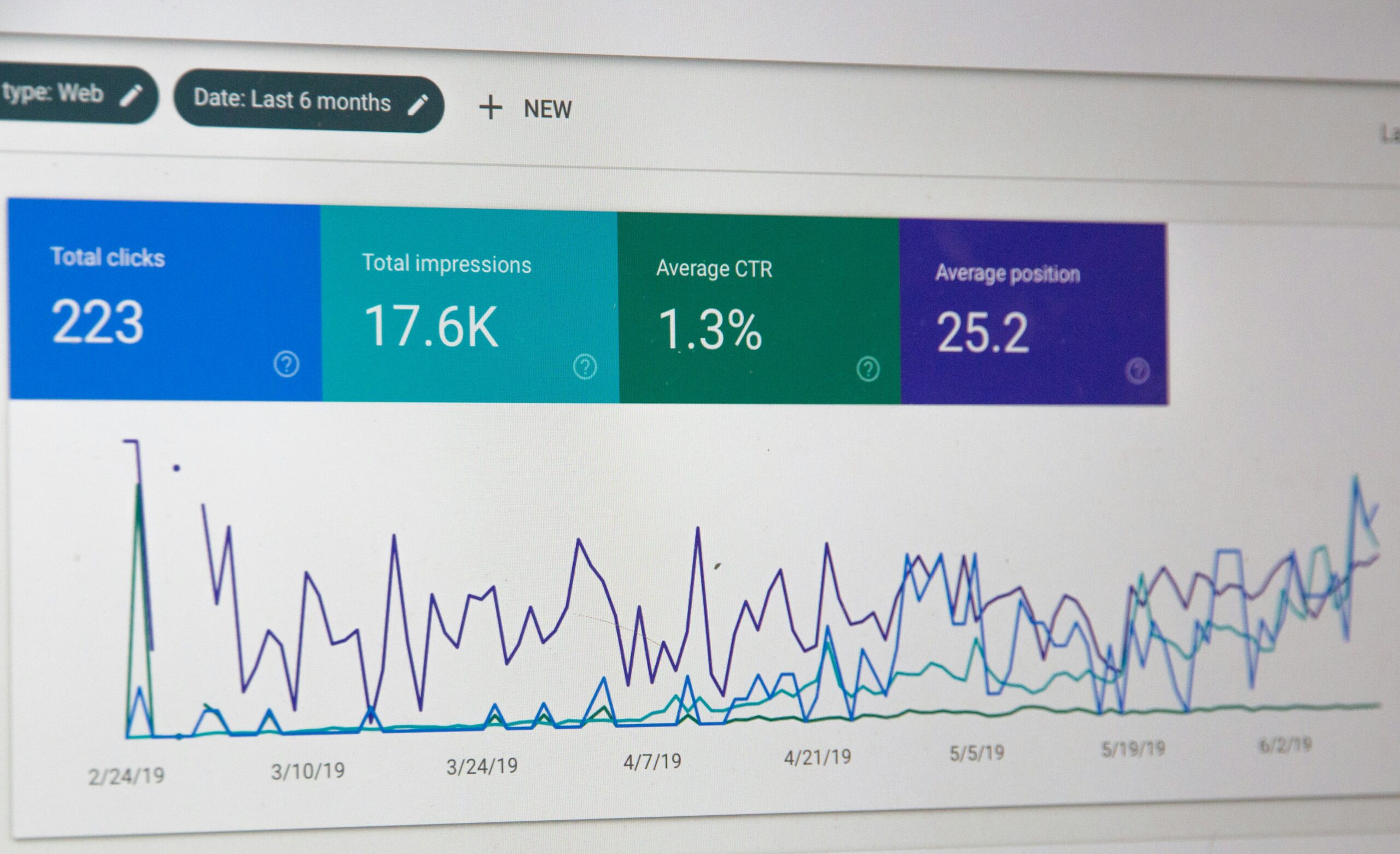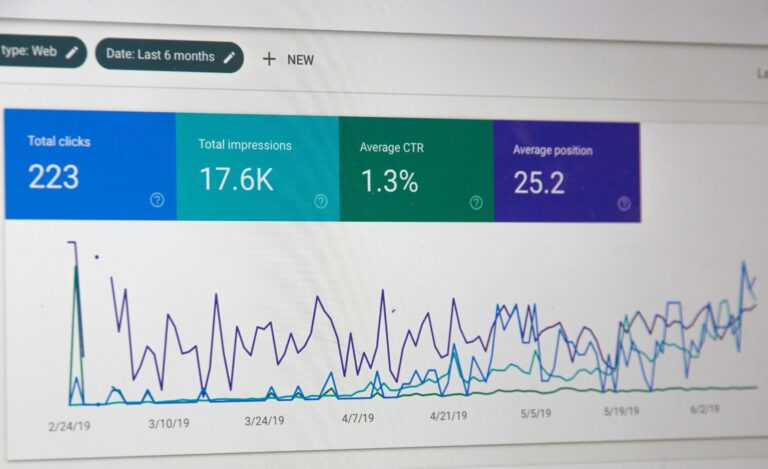
Introduction: The Problem with Vanity Metrics
In today’s data-saturated marketing landscape, it’s easy to fixate on surface-level indicators—likes, impressions, and click-through rates (CTR). These so-called “vanity metrics” may help you feel good about your reach and engagement, but they rarely translate into tangible business outcomes. While a high CTR signals that your content is resonating enough to prompt clicks, it doesn’t tell you whether those clicks convert into paying customers, repeat purchases, or long-term loyalty.
The real challenge for digital marketers and marketing managers is to connect campaign activities with bottom-line growth. That requires moving beyond click-centric metrics and embracing a broader, more strategic set of performance indicators—ones that align directly with revenue, profitability, and sustainable growth.
Surface Metrics vs. Impact Metrics: Understanding the Difference
Surface Metrics
- Impressions & Reach: Total number of times your ad/content is displayed.
- Click-Through Rate (CTR): Percentage of viewers who click on your ad.
- Social Engagements: Likes, shares, retweets, and comments.
Impact Metrics
- Cost per Acquisition (CPA): The average spend required to acquire a customer.
- Customer Lifetime Value (CLV): Projected revenue from a customer over their entire relationship with your brand.
- Return on Ad Spend (ROAS): Revenue generated for every dollar spent on advertising.
- Churn Rate & Retention: Measures of customer loyalty and repeat business.
While surface metrics can provide quick feedback on creative performance or message resonance, they seldom correlate with ROI. Impact metrics, by contrast, translate marketing activities into economic terms. They provide actionable insights that inform budget allocation, campaign optimization, and strategic planning.
Acquisition Metrics That Matter
Customer Acquisition Cost (CAC) Analysis by Channel
Definition: CAC = (Total Marketing Spend) ÷ (Number of New Customers Acquired)
Breaking down CAC by channel—social media ads, paid search, email marketing, affiliate partnerships—enables marketers to identify which channels deliver the most cost-effective conversions. A channel with low CAC but poor retention rates may not be as valuable as one with a slightly higher CAC but stronger long-term engagement.
Best Practices:
- Include All Touchpoint Costs: Account for creative production, ad management fees, and attribution model adjustments.
- Compare New vs. Returning Customers: Some channels excel at upselling loyal users; others attract first-time buyers.
- Track Cohorts Over Time: Monitor CAC trends for cohorts acquired in different months to detect seasonality or campaign fatigue.
Traffic Quality Indicators Beyond Volume
A spike in web traffic is a cause for celebration—until you realize half of it bounces immediately. Instead of fixating on visits, measure:
- Bounce Rate by Source: High bounce rates on display ads could signal irrelevant placements or misleading creative.
- Time on Page & Pages per Session: The deeper users explore your site, the higher the likelihood of conversion.
- Scroll Depth & Video Completion Rates: Engagement with long-form content signals genuine interest.
Engagement Signals That Predict Conversion
Not all engagements are created equal. Use these signals to identify high-intent prospects:
- Form Fills & Whitepaper Downloads: Micro-conversions that often precede a purchase inquiry.
- Product Page Views & Comparison Tools Usage: Indicates active research and pre-buying consideration.
- Chatbot Interactions & Demo Requests: Strong indicators of intent, especially in B2B contexts.
By weighting these signals in lead-scoring models, marketing and sales teams can prioritize follow-up efforts on the most promising leads.
Conversion Pathway Analysis
Multi-Touch Attribution Approaches
Traditional last-click attribution underestimates the impact of upper-funnel activities like brand awareness and content marketing. Consider more nuanced models:
- Linear Attribution: Distributes credit evenly across all touchpoints.
- Time-Decay Attribution: Favors touchpoints that occurred closer to the conversion event.
- Position-Based (“U-Shaped”) Attribution: Allocates 40% credit to first and last touch, and the remaining 20% evenly across the mid-funnel.
For enterprise marketers, leveraging data-driven (algorithmic) attribution often yields the most accurate picture—but requires sufficient cross-channel tracking and data volume.
Conversion Rate by Segment and Stage
Don’t treat conversion rate as a monolith. Break it down by:
- Audience Segment: New vs. returning visitors, geographic regions, device types, referral sources.
- Funnel Stage: Awareness → Interest → Consideration → Decision.
A low top-funnel conversion rate might call for creative A/B tests, whereas a mid-funnel drop could necessitate enhanced retargeting or offer adjustments.
Micro-Conversion Tracking
Micro-conversions are small, incremental actions that signal buyer readiness:
- Newsletter Signups
- Product Wishlist Additions
- Video Plays over 50% Completion
By quantifying and optimizing these micro-conversions, marketers can diagnose friction points earlier and increase overall funnel velocity.
Customer Value Metrics
Customer Lifetime Value (CLV) Calculation Methods
CLV is the cornerstone for sustainable growth planning. Common methods include:
- Historical CLV: Sum of past revenues from a customer, adjusted for gross margin.
- Predictive (Forward-Looking) CLV: Employs statistical or machine learning models to forecast future purchases based on behavior patterns and demographics.
- Cohort-Based CLV: Calculates CLV separately for each acquisition cohort, revealing how CLV evolves over time or by channel.
Key Considerations:
- Gross Margin vs. Revenue: Always calculate CLV on a margin basis to inform true profitability.
- Discount Rate: Apply an appropriate discount rate to future cash flows.
- Retention Curve Analysis: Understand how retention decays over time to accurately project future value.
Retention and Churn Prediction
Retaining customers is typically more cost-effective than acquiring new ones. Two critical metrics:
- Retention Rate: Percentage of customers who make repeat purchases within a specified time frame.
- Churn Rate: Percentage of customers lost in a given period.
Predictive Modeling Tips:
- Use behavioral features (recency, frequency, monetary value) and demographic features (location, segment).
- Leverage survival analysis techniques to estimate time-to-churn.
- Automate alerts when a high-value segment shows early signs of churn risk—e.g., drop in purchase frequency or engagement.
Upsell and Cross-Sell Opportunity Metrics
Revenue expansion within your existing customer base often yields the highest ROI. Track:
- Attach Rate: Percentage of customers who adopt add-on products or services.
- Average Order Value (AOV) Growth: Increase in transaction value post-purchase of an initial product.
- Product Affinity Scores: Correlations between products frequently purchased together.
Integrate these metrics into your segmentation and personalization engine to trigger timely, relevant offers—thereby lifting both customer satisfaction and wallet share.
Implementing a Balanced Measurement Framework
Building Dashboards That Tell the Complete Story
A one-size-fits-all dashboard is a recipe for confusion. Instead, develop role-based views:
- Executive Dashboard: High-level KPIs (ROAS, CLV vs. CAC, overall revenue growth).
- Channel Manager Dashboard: Channel-level CAC, CPA, micro-conversion rates.
- Retention & Loyalty Dashboard: Churn trends, net promoter score (NPS), product affinity charts.
Design Tips:
- Use visual hierarchies—big bold figures for critical metrics, smaller panels for supporting data.
- Highlight trends versus targets to quickly identify areas needing attention.
- Employ heatmaps or conditional formatting to spotlight anomalies.
Setting Up Alerts for Meaningful Changes
Automated alerts free you from constant monitoring while ensuring you catch issues promptly:
- Statistical Control Limits: Trigger when a metric deviates more than X standard deviations from its moving average.
- Threshold Alerts: Notify when CAC rises above a pre-set limit or when daily signups drop by more than 20%.
- Predictive Alerts: Use forecasting models to predict when key metrics might underperform and preemptively intervene.
Alerts should be tuned to minimize false positives—too many noise signals will desensitize your team.
Communicating Metrics to Different Stakeholders
- C-Suite: Speak in revenue and profitability. Focus on high-level ROI metrics and strategic implications.
- Martech/Analytics Teams: Dive deep into attribution models, statistical confidence, and data integrity.
- Creative/Channel Teams: Emphasize engagement and conversion pathways, backed by data-driven insights on what content and channels work best.
Use storytelling techniques—contextualize metrics with anecdotes or case examples to make data resonate.
Case Example: How Metric Reframing Changed Campaign Strategy
Background: A mid-size e-commerce brand ran multiple paid social campaigns. Their CTR hovered around 4–5%, which they initially celebrated. Yet, CAC remained stubbornly high, and ROAS lagged below 2x.
What They Did:
- Shifted Focus to Micro-Conversions: They tracked product page scroll depth, add-to-cart events, and email signups.
- Implemented Time-Decay Attribution: Recognized that early touchpoints (blog articles, influencer posts) were driving 30% of final purchases.
- Rebalanced Spend by Channel: Moved budget from underperforming display ads (high clicks, low micro-conversions) to video content and influencer partnerships that drove higher add-to-cart rates.
Results (6-Month Window):
- CAC: Reduced by 22%.
- Micro-Conversion Rate: Increased by 48%.
- ROAS: Improved from 1.8x to 3.4x.
- CLV: 15% uplift in 90-day repeat purchase revenue.
By reframing their metric dashboard—from CTR-centric to impact-centric—they unlocked actionable insights that drove profit, not just clicks.
Conclusion: Audit Template for Your Current Metrics
To transition from vanity metrics to impact-driven measurement, conduct a metrics audit using this template:
| Metric Category | Current Metric | Is It a Vanity Metric? | Alternative Impact Metric | Action Needed |
|---|---|---|---|---|
| Awareness | Impressions | Yes | Reach quality (DAU/MAU ratio, unique visitors) | Add quality filters; track upper-funnel micro-conversions |
| Engagement | Likes/Shares | Yes | Content interaction depth (scroll, video play) | Instrument scroll-depth, time-on-content |
| Acquisition | CTR | Yes | CAC by channel | Implement full CAC calculation; attribute costs |
| Mid-Funnel Conversion | Email Signups | No | Email-to-purchase conversion rate | Integrate email system data; optimize nurture flows |
| Bottom-Funnel Conversion | Sales Conversion Rate | No | Revenue per visitor (RPV), ROAS | Set up e-commerce tracking; calculate RPV/ROAS |
| Retention | Repeat Purchase Rate | No | Cohort-based CLV | Develop cohort analysis; project CLV |
| Upsell/Cross-Sell | Attach Rate | No | Upsell revenue ratio, product affinity scores | Enhance segmentation; apply personalized offers |
Use this audit template to systematically retire low-value metrics and replace them with indicators that drive real business value.
Unique Value: By shifting focus from reporting-focused analytics (CTR, impressions) to insight-focused metrics (CAC, CLV, churn prediction), digital marketers and marketing managers can allocate budget more effectively, optimize campaigns for profit rather than activity, and demonstrate clear links between marketing investments and business outcomes. This strategic pivot transforms marketing teams from metric reporters into drivers of growth and competitive advantage.

